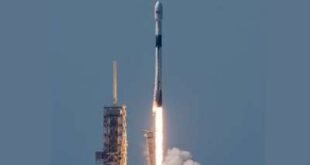
India is set to acquire 31 MQ-9B high altitude long endurance (HALE) drones from the United States in a phased manner, with an initial focus on technology absorption and intelligence capabilities. Sources familiar with the matter revealed that the acquisition will commence with a batch of 10 drones, initially unarmed, along with the establishment of three tri-service intelligence, surveillance, and reconnaissance command centers strategically positioned across the country.
During a meeting held on June 15, the Defense Acquisition Council (DAC), headed by Defense Minister Rajnath Singh, approved the proposal for the acquisition of a total of 31 drones—15 MQ9B Sea Guardians for maritime surveillance and domain awareness, and 16 Sky Guardian drones for land frontier security. The acquisition, valued at over $3 billion, will be conducted through the US foreign military sales route and is expected to receive a green light during Prime Minister Narendra Modi’s visit to the US.
While the first batch of drones will initially lack weaponry, all the drones will be equipped with hardpoints capable of carrying missiles and laser-guided bombs. The deal will also include an element of localization, allowing Indian-built munitions to be integrated into the drone systems. The acquisition of weapons, including missiles and bombs, will be the second phase of the deal, as not all drones require arming. Moreover, it is possible that not all drones will be manufactured in the US, indicating potential opportunities for domestic production.
India already operates two Sea Guardian drones on lease from General Atomics, deployed from INS Rajali in Tamil Nadu. The Indian Navy has gained firsthand experience in operating these HALE drones, which have a remarkable endurance of 40 hours and provide real-time maritime domain awareness from Southeast Asia to Africa.
Both the Sea Guardian and Sky Guardian drones possess versatile capabilities, including over-the-horizon targeting, anti-surface warfare, anti-submarine warfare, airborne mine countermeasures, long-range strategic surveillance, electronic warfare, defensive counter-air, airborne early warning, as well as supporting law enforcement, humanitarian disaster relief, and search and rescue missions.
The tri-service command will oversee the operation of all 31 drones, but distribution will not be uniform. The mission-specific roles will be defined by three operational centers under the guidance of future theater commanders and the permanent chairman of the Chiefs of Staff Committee.
The acquisition of MQ-9B drones represents a significant leap in India’s defense capabilities and showcases the strengthening defense ties between India and the US. The phased acquisition approach will enable India to gradually enhance its unmanned aerial capabilities and bolster its national security apparatus. As the partnership progresses, India aims to utilize the technology transfer and localization aspects of the deal to promote indigenous defense production, further strengthening its self-reliance and strategic autonomy in defense matters.
Sources By Agencies
 Digital Scoop India Official Platform of Digital Scoop India Featuring Latest & Best News #Articles #Bytes #Entertainment #DigitalScoopMagazine
Digital Scoop India Official Platform of Digital Scoop India Featuring Latest & Best News #Articles #Bytes #Entertainment #DigitalScoopMagazine


